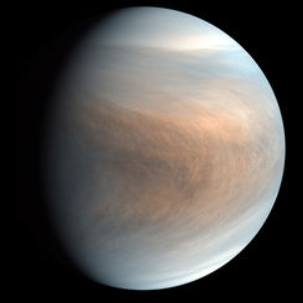Oxygen spotted on Venus
 German scientists have detected the presence of oxygen on Venus.
German scientists have detected the presence of oxygen on Venus.
This revelation comes as a result of their analysis of 17 points across both the day and night sides of the planet.
The groundbreaking research indicates that during a Venusian day, which lasts a staggering 243 Earth days, carbon dioxide and carbon monoxide are broken down on the dayside and subsequently transported to the nightside.
At all observed locations, oxygen was identified, with the most significant concentrations occurring approximately 100 kilometres above the planet's surface.
This direct detection of atomic oxygen on Venus is a significant development, shedding light on the complex atmospheric processes of the planet.
The findings were published in a Nature Communications paper and open the door to in-depth investigations into the region between Venus's atmospheric circulation patterns.
Furthermore, these discoveries may offer valuable insights for future space missions to Venus, potentially enhancing our comprehension of why its atmosphere differs so greatly from Earth's.
Venus, with its notably slow rotation, presents unique challenges and opportunities for scientific exploration.
The generation of atomic oxygen on the planet's dayside, through the breakdown of carbon dioxide (CO2) and carbon monoxide (CO), is crucial for its atmospheric photochemistry and energy balance.
Until now, direct observations of atomic oxygen on the dayside were lacking, while nightside detections were limited to the faint night airglow.
The research team, led by Heinz-Wilhelm Hübers, utilised the upGREAT array spectrometer aboard the Stratospheric Observatory for Infrared Astronomy (SOFIA) aeroplane to examine various points on both the dayside and nightside of Venus.
Their observations confirmed the presence of atomic oxygen at all the locations studied, with a notable concentration at altitudes of approximately 100 kilometres.
Furthermore, variations in column densities were identified, with the highest density observed on the dayside.
This breakthrough in the study of Venus's atmosphere and the direct detection of atomic oxygen is a significant step forward in the understanding of this enigmatic planet.








 Print
Print